The Riddarhuset in Stockholm is open to visitors for an hour every weekday, and a visit here is really interesting. Here you can see the Knight's Hall with over 2000 copper armour plates.
Table of contents
Riddarhuset in Stockholm
Riddarhuset in Stockholm, or Riddarhuspalatset as it is also called, is owned and managed by the Knighthood and the nobility, which is a so-called "corporation". There is a genealogical department that works with the pedigrees of the nobility, publishes the Adelskalendern and awards scholarships. Once a day, on weekdays, they welcome visitors to the palace.
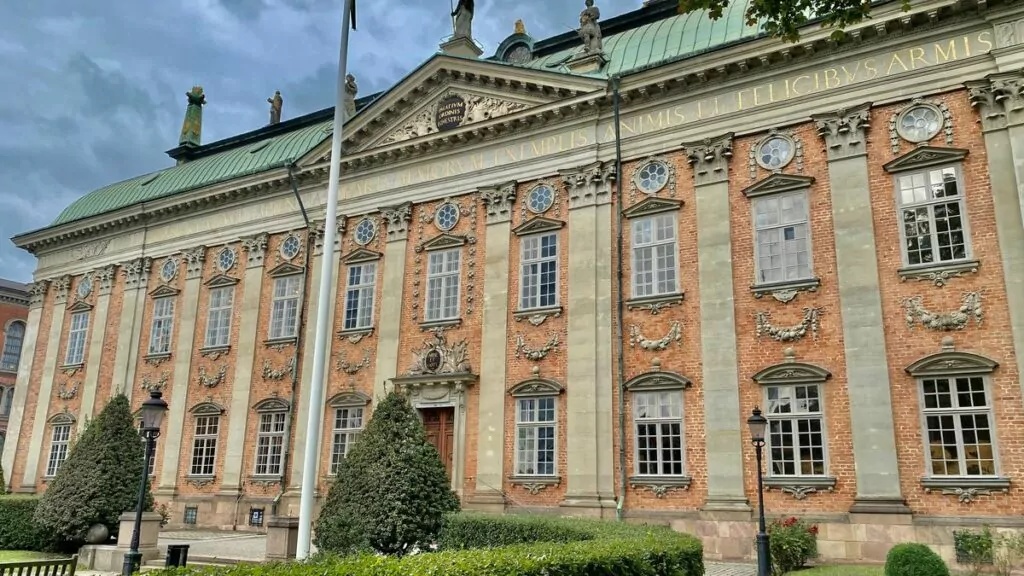
The Riddarhuset is located in Stockholm's Old Town, right next to the Bondeska Palace and not far from the Riddarholm Church.
One palace - four architects
The Riddarhuset in Stockholm was built between 1641 and 1674. The first architect was the Frenchman Simon de la Vallée, who planned a mighty Renaissance palace. Unfortunately, construction only started before he was struck down in Stortorget by Erik Oxenstierna and died from his injuries.
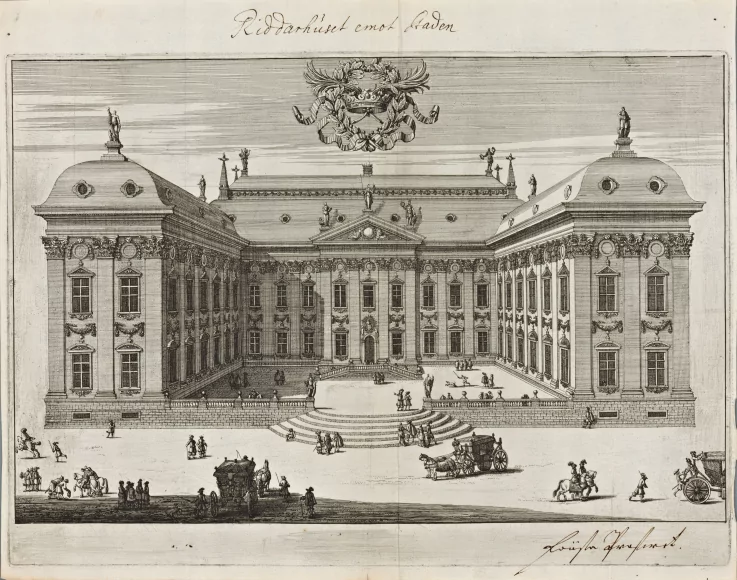
In 1647 the German master builder and stonemason was hired. Henry William, both to supervise the stonemasonry work and to act as an architect. He dropped the plans for a rear courtyard and changed the façade decoration, but in many respects stuck to the original plans. But he too died before the building was completed.
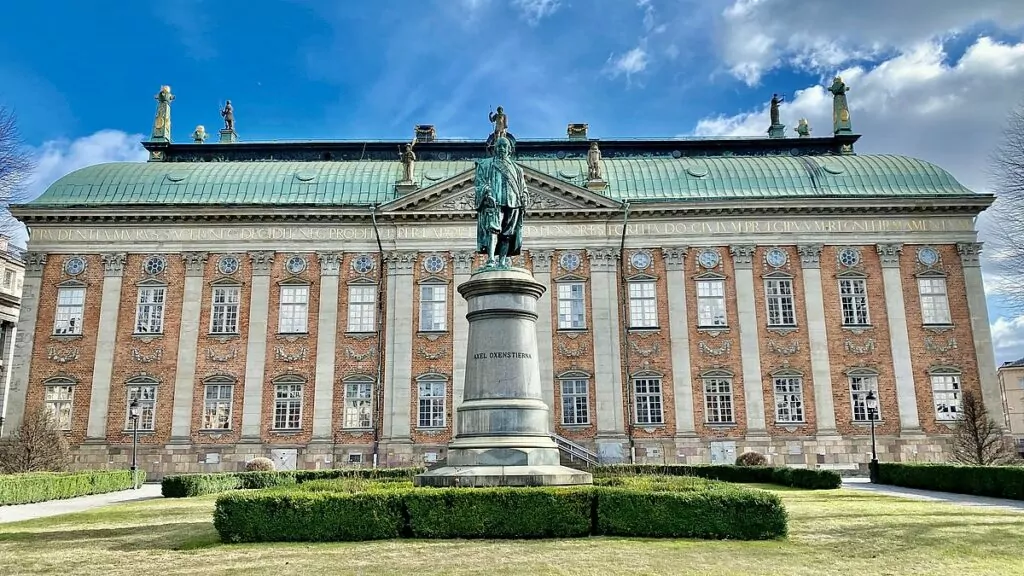
The next architect was the Dutchman Joost Vingboonswhich brought a distinctly Dutch character to the palace. Now, fruit garlands and other modern features were added to the classical baroque style of the 17th century.
Finally, it was the royal architect Jean de la Vallée, son of Simon, who had to finish the building. He left his mark by, among other things, making round, rather than square, windows under the eaves.
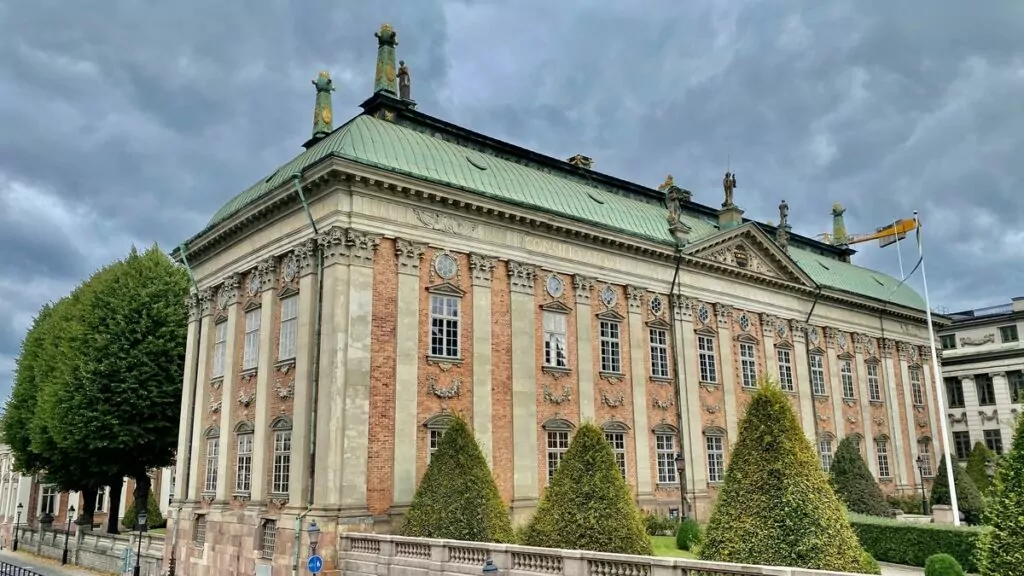
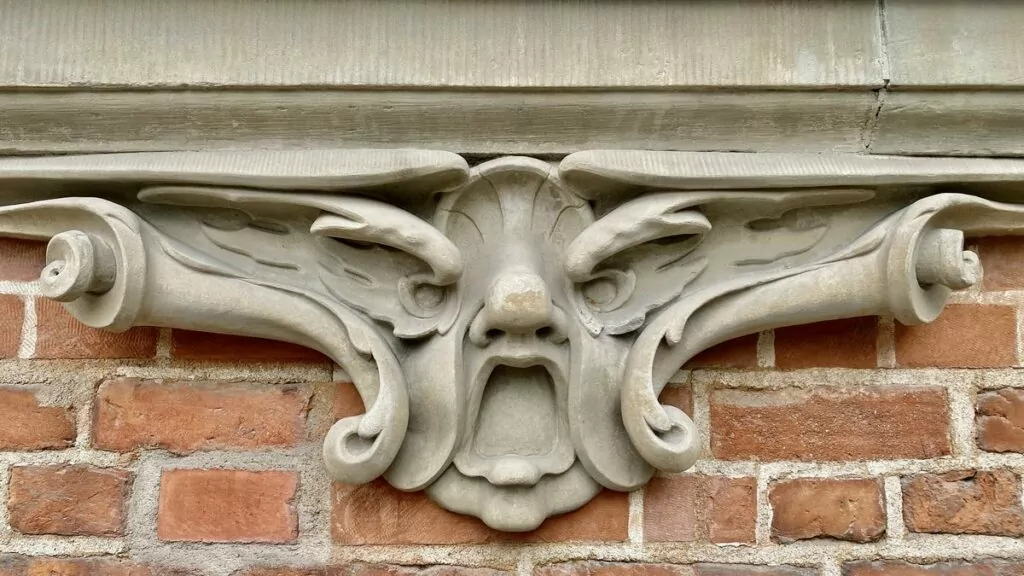
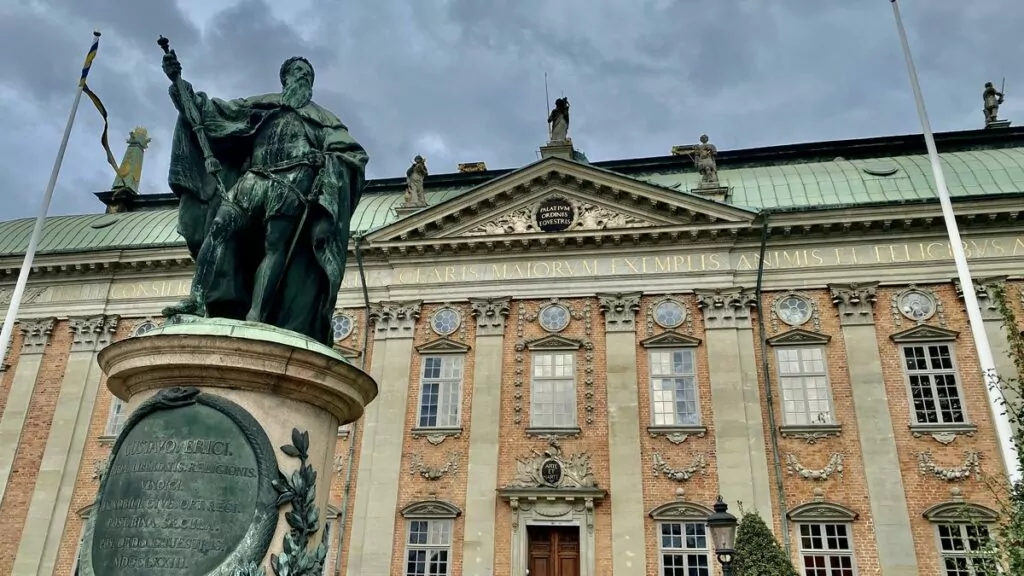
The younger Vallée wanted to realise his father's grandiose plans with wings to the south and pavilions to the north, but there was no money for this. The pavilions or wings you can see today? They were built in the 1870s according to Jean de la Vallée's idea.
Another interesting thing we were told was that the red brick in the facade helped to inspire the red colour that the farming community started to use when painting their houses and cottages.
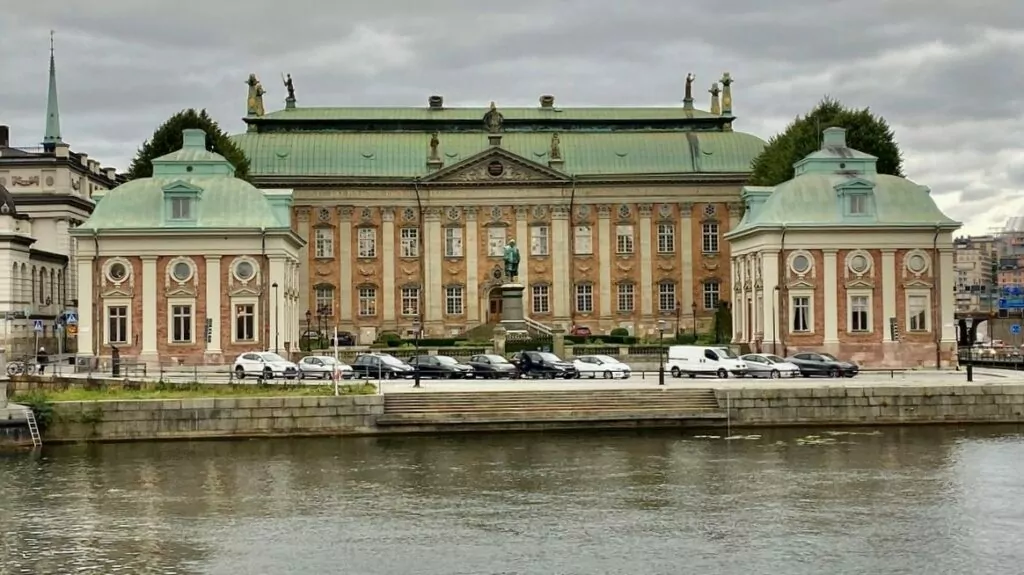
Heraldry, nobility and coats of arms
The House of Knights is concerned with genealogy (the study of human relationships) and heraldry (the study of heraldic arms and their history). If you happen to belong to a living or extinct noble family, you can come here to read about the family, or book an appointment in the library to do your own genealogical research.
It took three years to write.
We were shown a huge work (3 extremely thick volumes) with texts on more than 2000 noble families. "It took three years to write", said the man in the entrance, who is also the author of the texts. Yes, we can well imagine!
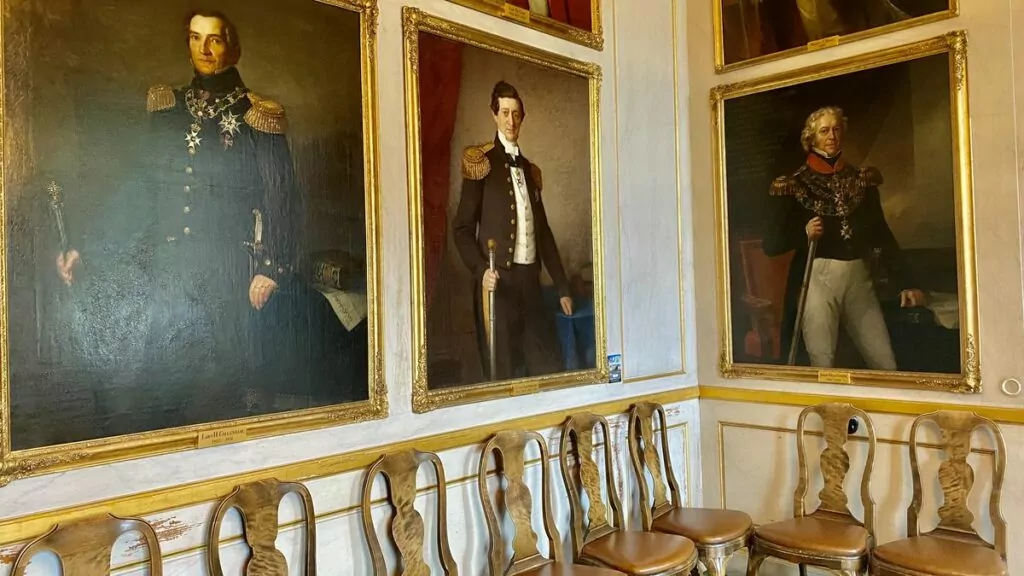
Riddarhussalen - with 2331 coat of arms plates
To realise just how many living and dead noble families there are, take a look at the magnificent Riddarhaus Hall. The walls of this hall are covered with no less than 2331 copper armour plates.
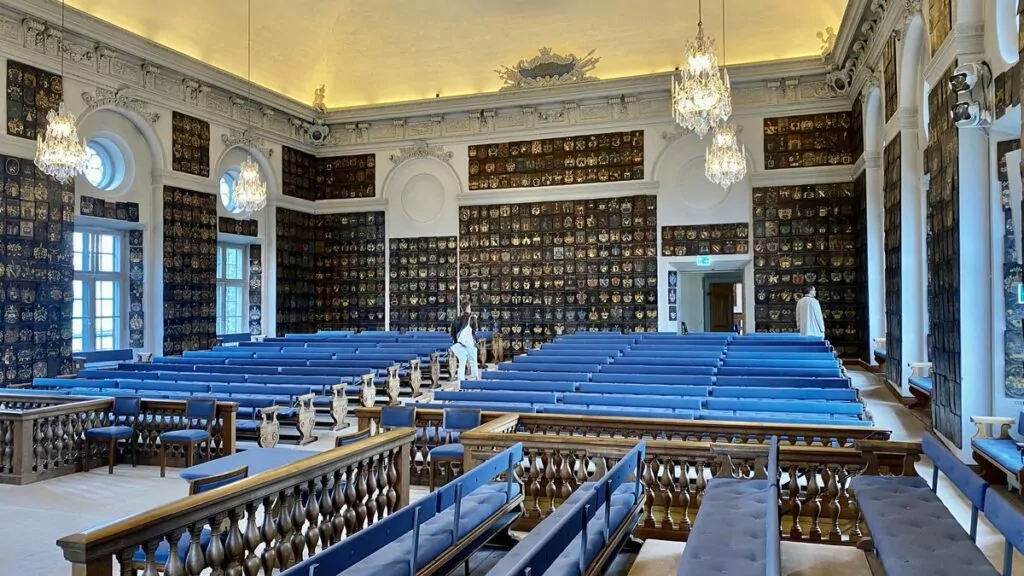
In the past, between 1668 and 1866, the hall was used as a venue for the nobility's parliaments, and today the nobility's meeting is held here every three years. The hall is also used quite frequently for various events, such as concerts and lectures.
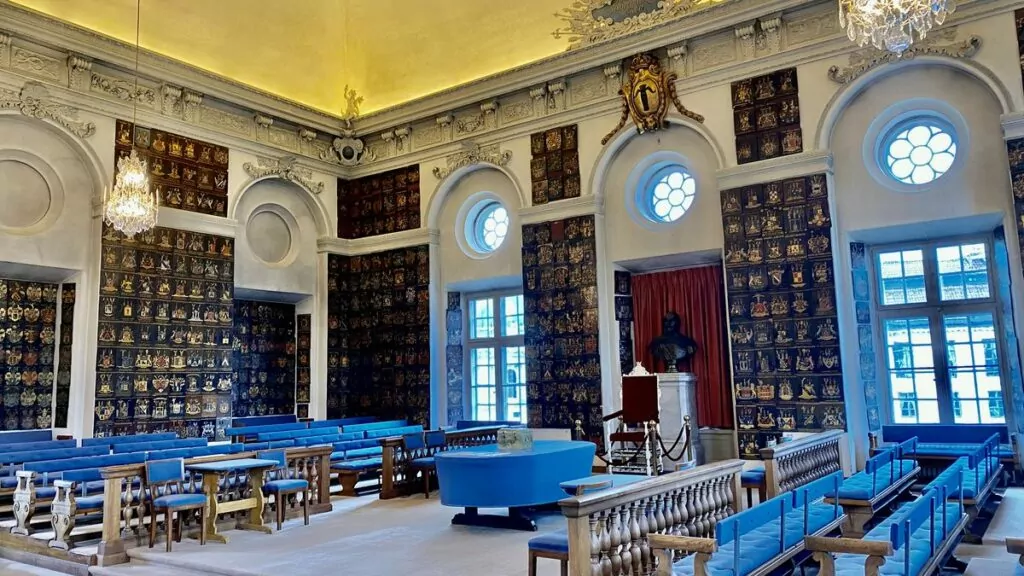
A magnificent ceiling mural
When you're in here, don't forget to look up at the ceiling! There is a magnificent ceiling painting from the 1670s, painted by court painter David Klöcker Ehrenstrahl.
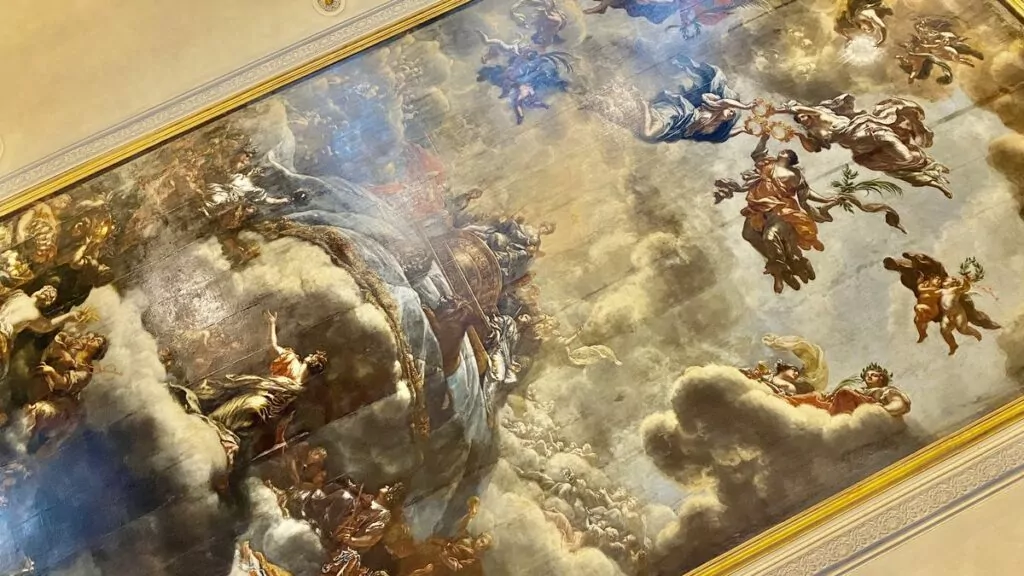
Old, imaginative and ... violent noble names
The coats of arms are hung according to rank, numerical order and year of induction. At the front of the "throne" are the oldest coats of arms.
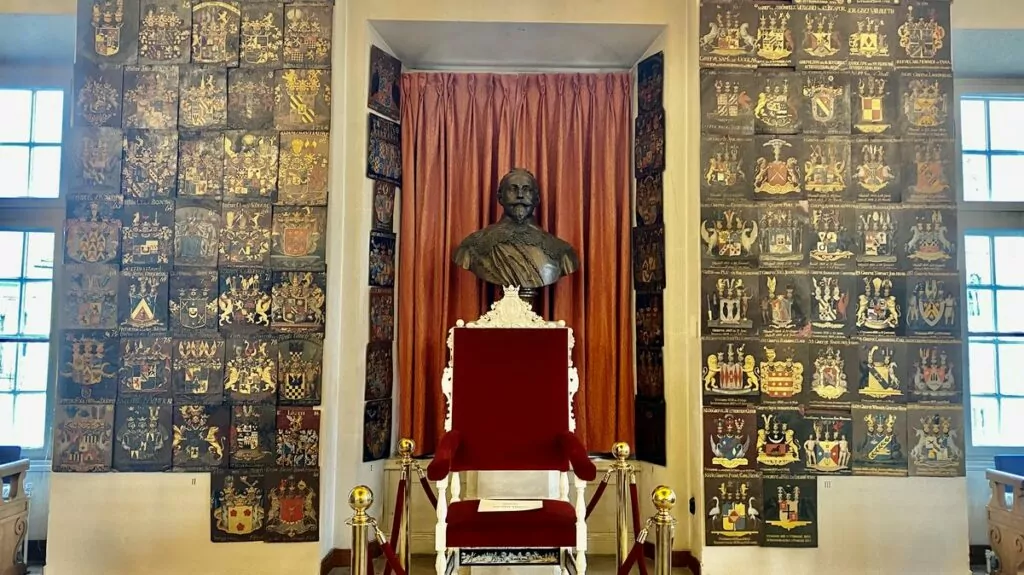
The newest shields hang at the entrance. The newest is Sven Hedin's coat of arms from 1902. He was the last person to be ennobled in Sweden. In addition to looking for old and new coats of arms, you can have fun looking for well-known noble names such as Bonde, Trolle, De Geer or Natt och Dag. Or how about imaginative or telling names such as Ståålklinga, Björnramar or Stålman?
You can also enjoy looking at the images in the arms, which often describe the (sometimes violent) life of the knight. For example, the Armlod family is illustrated with a severed arm. You can stay in this room for quite some time, but you have to check your watch because you only have one hour and there are more rooms!
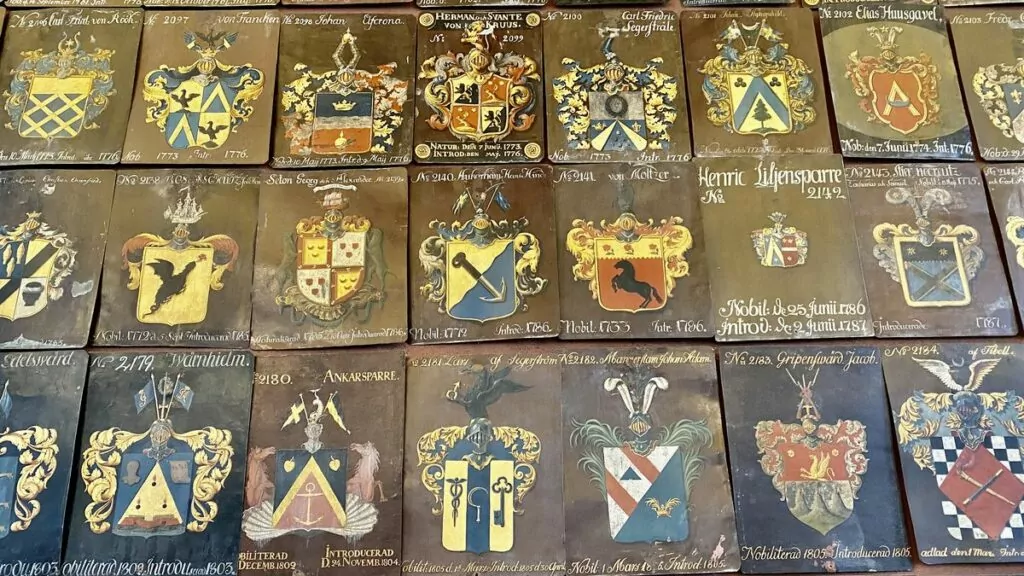
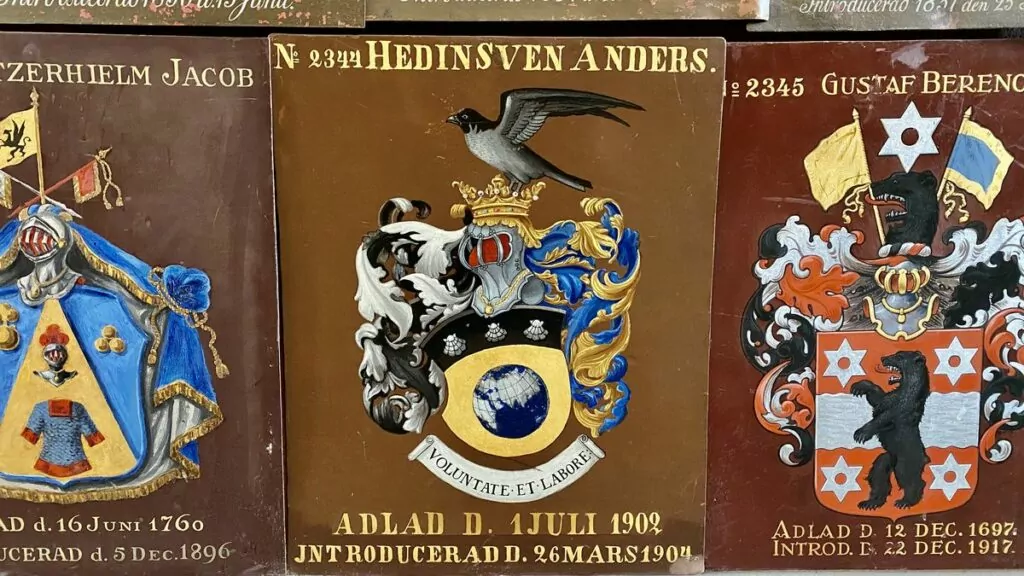
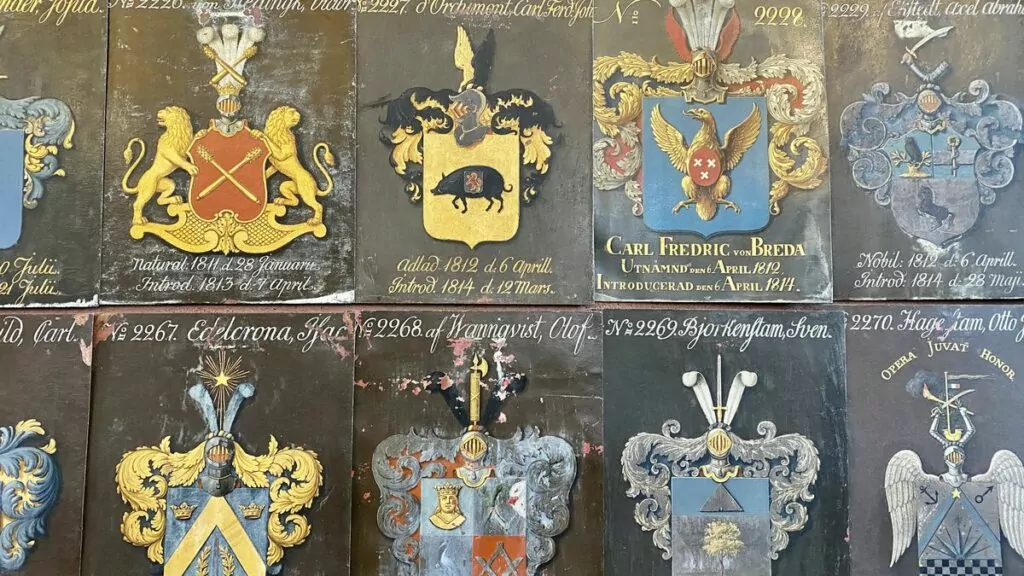
Visiting the Riddarhuset in Stockholm
Riddarhuset is normally open to visitors on weekdays between 11 a.m. and noon. For a fee of SEK 60 for adults, or SEK 40 for students and pensioners, you can look around the rooms for an hour.
The magnificent stone hall
The first thing that greets you when you open the front door is the magnificent Stone Hall. Here you can be particularly impressed by the large double staircase built in 1664-1668 under the direction of master builder Hans Thanner. The large painting 'The Train over the Belt', depicting King Karl X Gustaf on horseback and next to him Erik Dahlbergh showing the way to Denmark across the ice-covered Great Belt, is also displayed here.
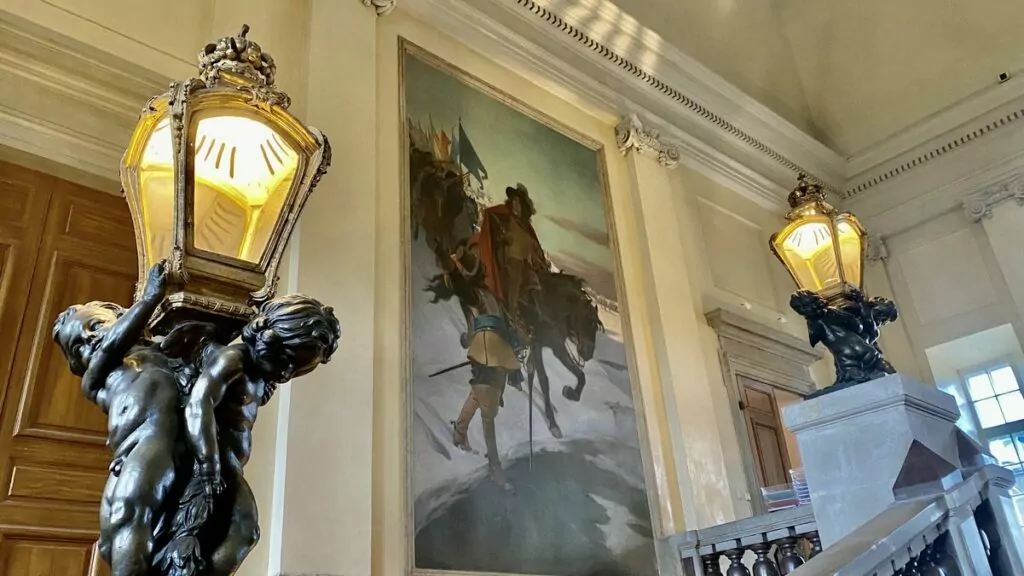
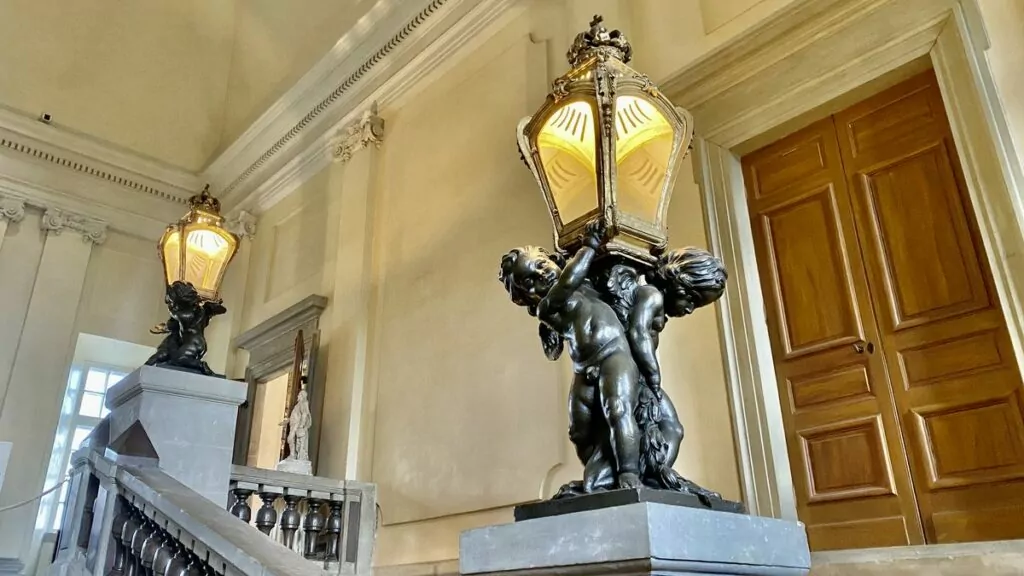
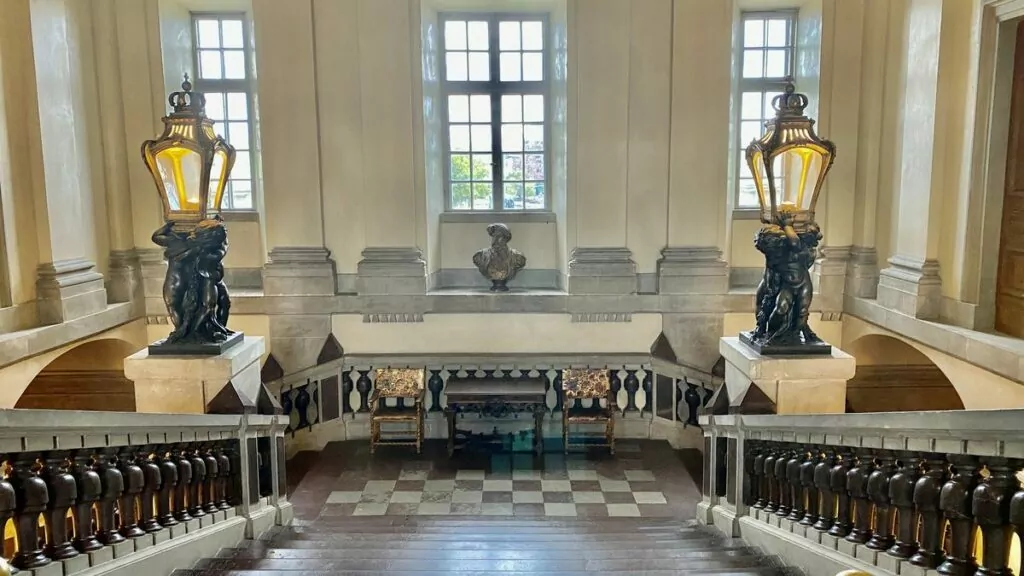
Lantmarskalksalen in Riddarhuset
On the lower floor you can visit the so-called Lantmarskalksaal, named after the gallery of portraits of the marshals. There are a total of 54 portraits, including those of Pasch the Younger, Breda and Krafft the Younger.
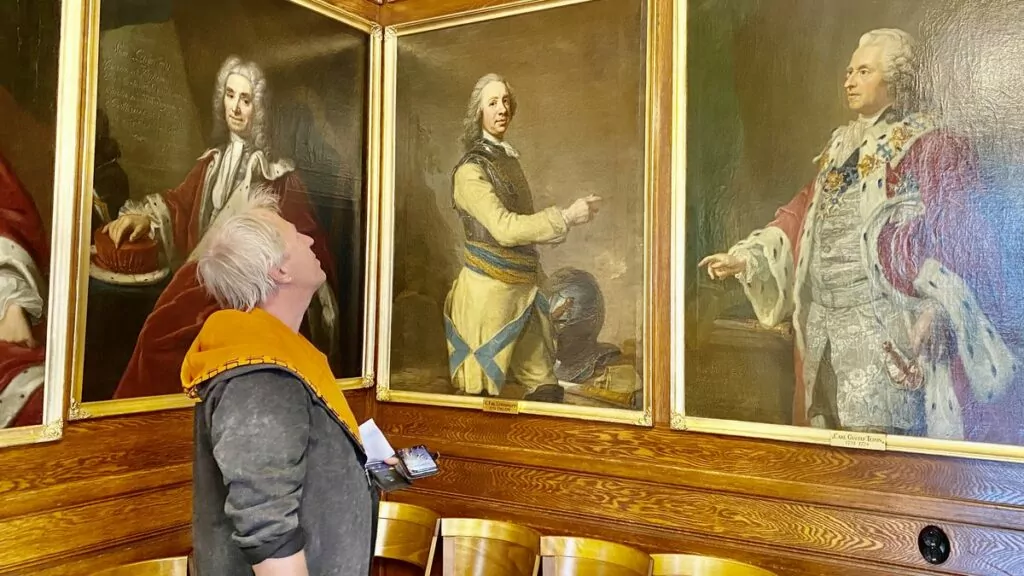
In the 18th century, the hall was used for meetings of the Secret Committee, which consisted of 50 nobles, 25 priests and 25 burghers. Today, the hall is used for dinners and various festivities.
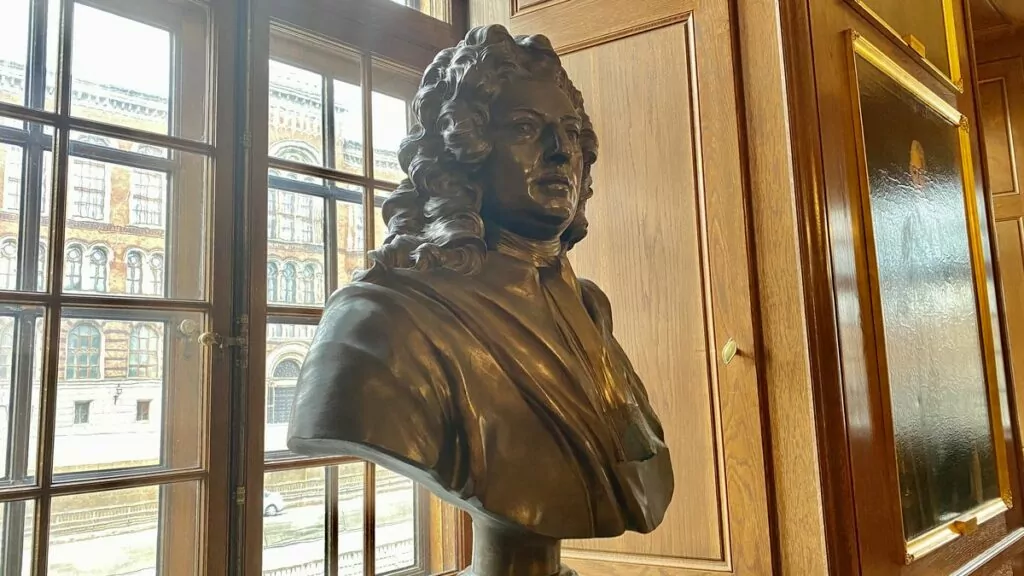
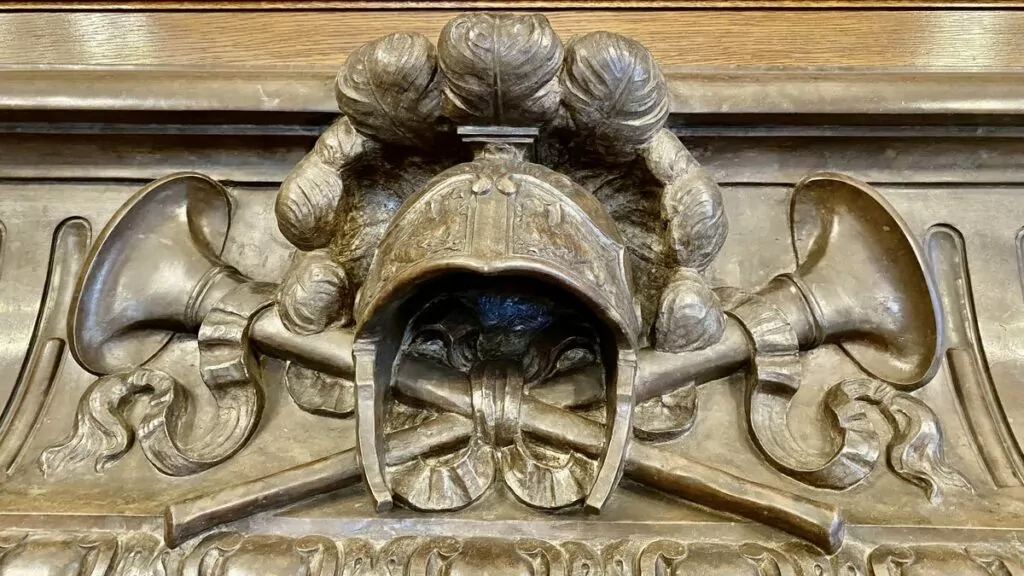
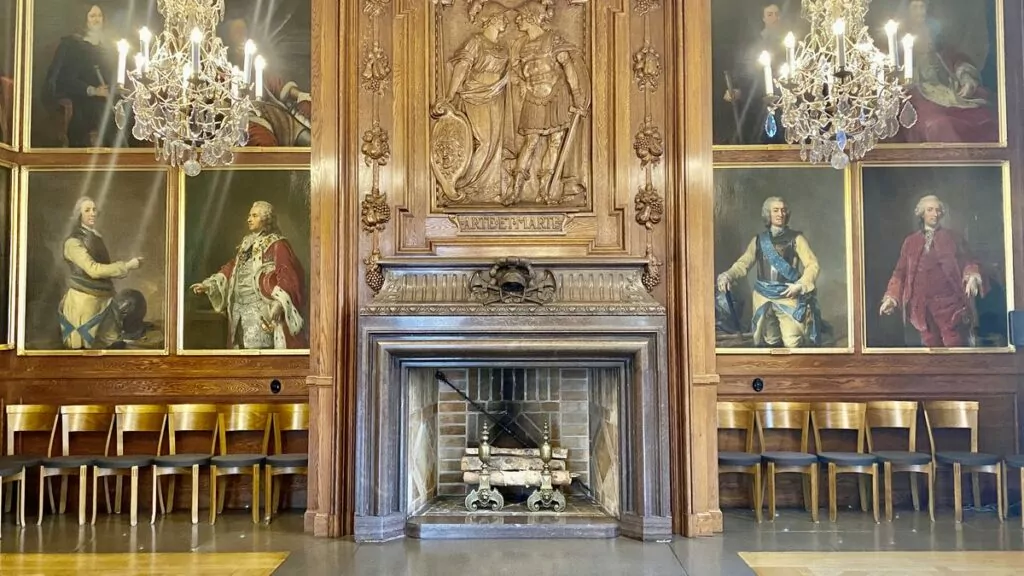
The Blue Room in the House of Knights
Upstairs, you can also peek into the 'Blue Room'. This room was designed in 1930 by the architect I.G. Clason and his son G. Clason to house Consul Hjalmar Wicander's large collection of armorial porcelain. This is probably the largest exhibited collection of East Indian porcelain with the arms of Swedish nobility.
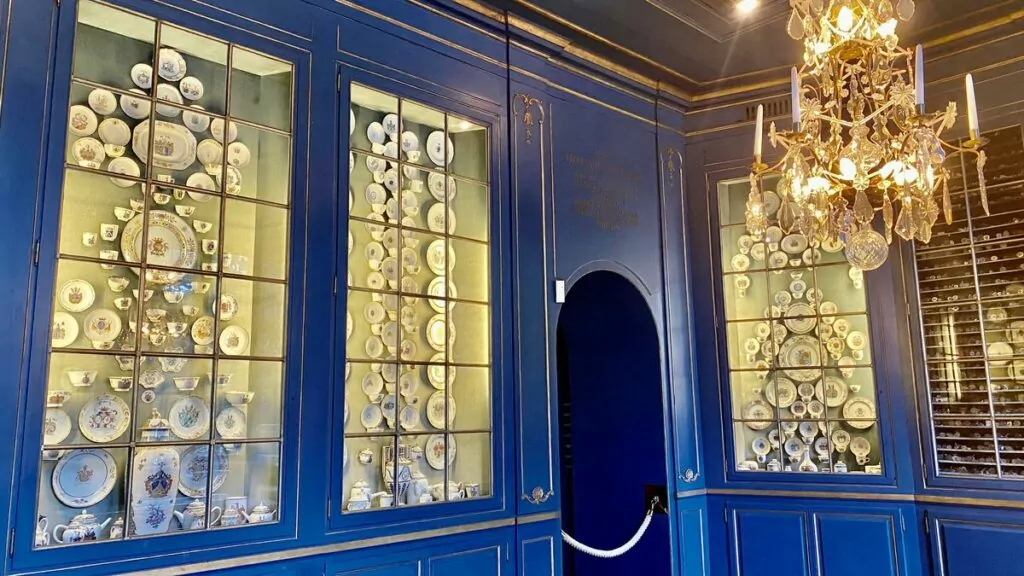
More to see in the neighbourhood
From Riddarhuset it is not far to Riddarholmskyrkan where all Swedish rulers from Gustav II Adolf to Gustaf V, with the exception of Queen Kristina, are buried.
It is also very close to The Old Town which we have 30 great tips on, which is an attraction in itself. Here you can stroll through narrow charming alleys and spot highlights such as the Royal Palace, Storkyrkan with St Göran and the dragon, Stortorget and Västerlånggatan. It is also not far to Kungsträdgården, where the Makalös Palace once stood..
Skokloster camping - great waterfront on the Skohalvön peninsula
Skokloster camping (or Sånka camping as it seems to be called on the signs here) is located on Skohalvön...
Berth in Sikhjälma harbour - scenic area at Hållnäs
This motorhome weekend started with us going to a parking space in Sikhjälma harbour,...
Filmstaden Råsunda in Solna - 100 years of film history
Filmstaden Råsunda is currently operating as a cinema, although it is currently closed due to...
Huvudsta farm in Solna - murder story and beautiful surroundings
Huvudsta farm in Solna is located a short walk from the marina where we live. We are...
Salsta Castle in Uppland - castle café, guided tours and ghosts
Salsta Castle is a beautiful baroque castle from the 17th century. We were fascinated by the beautiful building when...
Albert Engström's museum in Grisslehamn, Roslagen.
The Albert Engström Museum is located in Grisslehamn in Roslagen and tells the story of the artist Albert Engström. Here...
Marabouparken in Sundbyberg - art gallery and park hangout
Marabouparken in Sundbyberg is a park with an art centre and a large collection of sculptures. Despite...
The Swedish Upplands Road - FREEDOMtravel Themed Roads
Writer: Peter Bergström The Swedish Upplandsvägen is a themed road that takes you from Stockholm through...
Bogesund Castle in Vaxholm - and the Great Castle Tour.
Bogesund Castle in Vaxholm is a beautiful 17th-century castle located in the Bogesund countryside in Stockholm...
Ulriksdal Palace and Park - Royal Palace in Solna, Sweden
Ulriksdal Palace is one of the eleven royal palaces in Sweden, and offers a...
Görväln Castle and Görväln Nature Reserve
Görväln Castle and Görväln Nature Reserve are located in Järfälla municipality, north-west of Stockholm. We made a...
Visiting the Royal Palace of Stockholm - photos and tips
What is it like to visit the Royal Palace in Stockholm? If there is any attraction in the...
Sigtuna - Visiting the oldest town in Sweden
Join us in Sigtuna, Sweden's oldest town! Yesterday we woke up to blue skies and decided to...
Kapellskär campsite in the Riddersholm nature reserve
Kapellskär's camping is beautifully located in the Riddersholm nature reserve, with the coast and the Åland Sea right outside. We...
Wenngarn Castle in Sigtuna - castle park, café and history
Wenngarn Castle in Sigtuna is a beautiful castle, which was once built by Magnus the...
Väddö sea baths and camping in Roslagen
Väddö havsbad och camping på Väddö is a campsite with a sandy beach, surrounded by beautiful nature....
Grönsöö castle in Uppland - and a cosy free camping site
Grönsöö Castle is a fine 17th century castle on the island of Grönsö in Lake Mälaren, Uppland. In the summers, the...
From Sundbyberg to Sigtuna - a visit to the Sigtuna Foundation
Guest writer: Christina Gripenberg More specifically, to the Sigtuna Foundation. It's a journey of 1.5 hours, first...
Riddarholm Church in Stockholm - the burial place of kings
Riddarholm Church is Stockholm's only surviving medieval monastery church. This magnificent building, constructed at the end of the...
Cultural trail in Värmdö - Pilhamn on Ingarö.
Yesterday a new cultural trail opened in Värmdö municipality, on the island of Ingarö, called Kulturstig Pilhamn....
Vikingabyn Storholmen - open-air museum in Roslagen.
Vikingabyn Storholmen is an open-air museum beautifully situated by Lake Erken in Roslagen. For a few...
Ängskärs sea campsite in Uppland - and three caravan sites
Ängskärs havscamping is beautifully situated on the Hållnäs peninsula in north-eastern Uppland. We camped here for one day and...
Solna church - and the beautiful Norra begravningsplatsen cemetery
Solna Church is a nice little round church from the 12th century. Adjacent to the church is Norra begravningsplatsen, which...
Road trip in Roslagen - 10 places to visit
Looking for a road trip in Roslagen? We recommend ten great destinations to visit...
Steninge castle in Uppland - Aunt Anna and the sugar bushes
Guest writer: Anna Nilsson Spets A visit to Sweden for me is full of activities, we headed for...
Törnskogen nature reserve - lost twice in one day
Törnskogen Nature Reserve consists of Södra Törnskogen in Sollentuna and Norra Törnskogen in Upplands Väsby. Here...
30 attractions in Old Town - tourist in Stockholm
Sights in the Old Town! The old parts of Stockholm are not only charming and beautiful,...
Österbybruk - mansion and mill environment in Roslagen
Österbybruk is beautifully located in Roslagen and offers a beautiful manor house, historic mill environment and...
Butterfly House in Haga - tropical climate, butterflies and sharks
Have you visited the Butterfly House in Haga? For us it was a long time ago, but now...
What to do in Solna - 15 activities and experiences
What can you do in Solna? We have lived in Solna for eight years, and before...
Bredsands camping in Enköping
Finally, we have a completely free weekend and the opportunity to go out with the motorhome ....
Things to do in Norrtälje - 11 tips for the capital of Roslagen.
What can tourists do in Norrtälje? Norrtälje is an idyllic archipelago town with beautiful old...
Royal palaces in Sweden - 11 magnificent castles
Royal palaces in Sweden are the subject of today's article. Did you know that there are 11...
Kvarngården in Knivsta - homestead with nice parking space
Kvarngården in Knivsta is a local history centre and caravan park run by Knivsta Hembygdsgille. Here...
Hagaparken in Solna - castles, gazebos and pavilions
Hagaparken in Solna is a beautiful park where you can stroll among castles, gazebos and...
Pampas marina in Solna - all you need to know
Pampas marina in Solna is a marina, where you will also find houseboats and a restaurant....

Have you visited the Royal House?
Have you visited Riddarhuset in Stockholm? Do you find this type of attraction interesting?
Facts about the House of Lords
- Landscape: Uppland
- County: Stockholm County
- Municipality: Stockholm
- Address: Riddarhustorget 10, Riddarhusgränd 1, Riddarhuskajen 1-5
- Location: The Hercules neighbourhood in Stockholm's Old Town.
- Behaviour: 1641-1674
- Architects: Simon de la Vallée, Heinrich Wilhelm, Joost Vingboons, Jean de la Vallée and Adolf W, Edelsvärd.
- Style: Dutch Baroque
- Material: Stone and brick
- Owners: Chivalry and nobility
- Read more: You can find more information at Palace website.
Tours and activities
- Guided tours: Guided tours for groups are available for a fee and can be booked by phone or email. For school groups, guided tours are free of charge.
- Genealogy: For genealogical research, you can make an appointment at the Riddarhuset library.
- Events: Various events are organised such as concerts, theatre performances, lectures and art exhibitions.
- Booking of the palace/banquet hall: Family members and family associations can rent Riddarhuset for private events. Organisations/companies can rent the premises under certain conditions.
Services and practical information
- Opening hours: Weekdays 11-12 (2021).
- Prices: Adults 60 SEK. Children over 12, students and pensioners 40 SEK. You can pay by credit card or Swish. Visits are free for school classes.
- Shop: During visiting hours there is a shop with books and gifts.
- Accessibility: Riddarhuset is not accessible. There are many stairs and no lift.
History of the House of Knights
- 1641: Construction of the Riddarhuset in Stockholm began. Drawings were made by the architect Simon de la Vallée. The site had been purchased by Axel Oxenstierna and ceded to the nobility.
- 1642: After Simon de la Vallée's death, the German stonemason Heinrich Wilhelm became responsible for the construction.
- 1652: After Heinrich Wilhelm's death, he was succeeded by the Dutch architect Justus Vingboons.
- 1656: The Vingboons were dismissed and Jean de la Vallée, son of Simon, completed the work.
- 1674: The building was completed.
- 1870: Two independent wings, designed by Adolf W. Edelsvärd, were built.
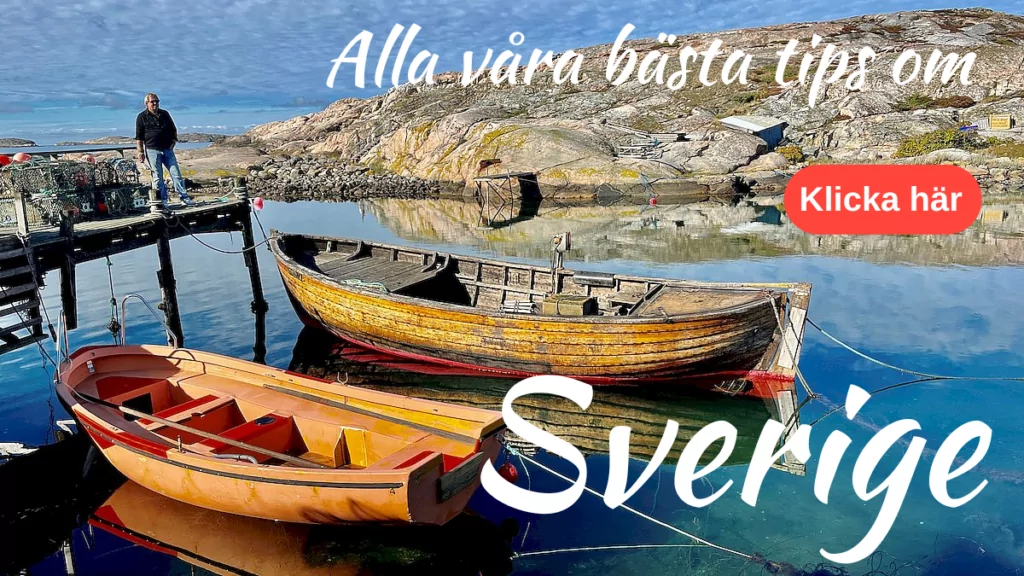


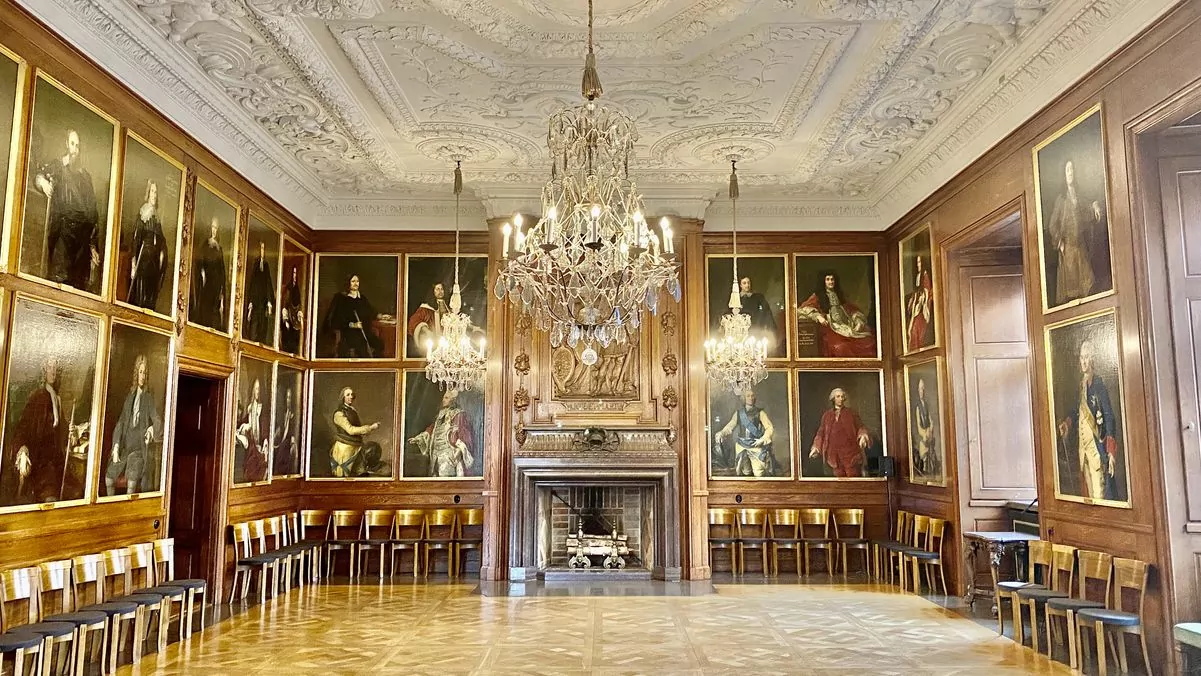








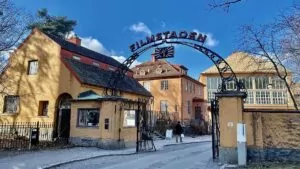
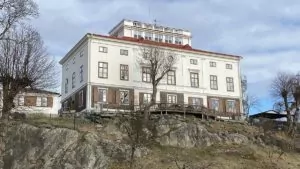
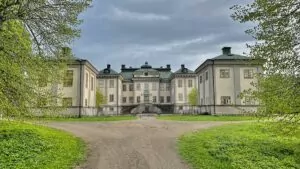
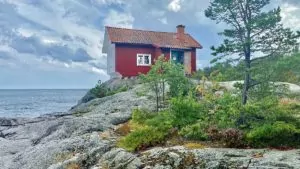
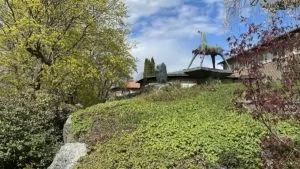
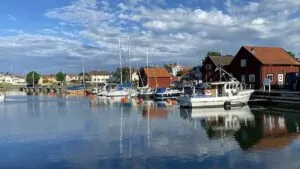
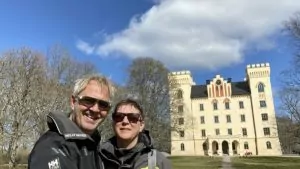
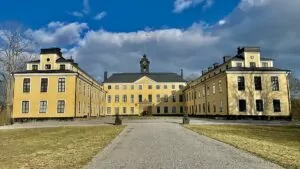
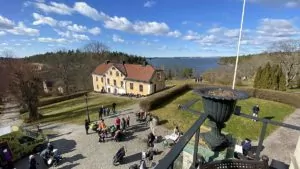
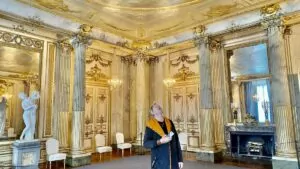
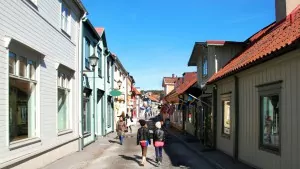

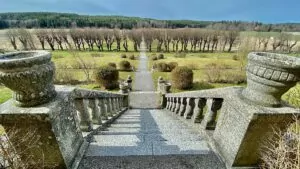

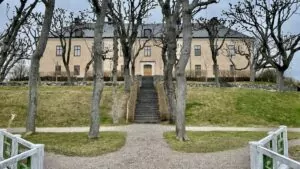
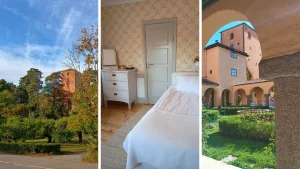
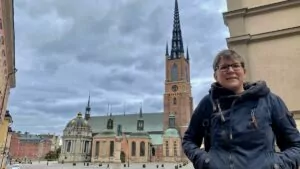



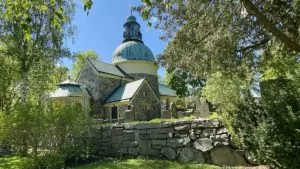

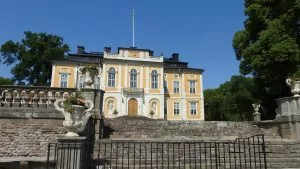

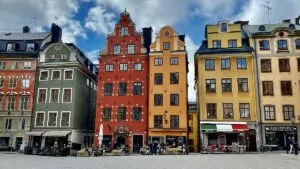
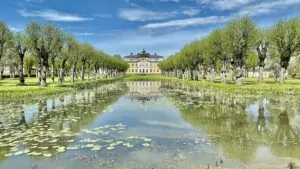

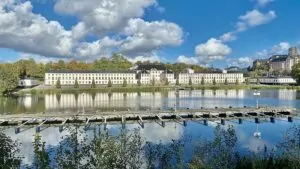
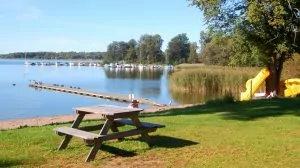
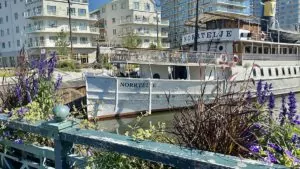
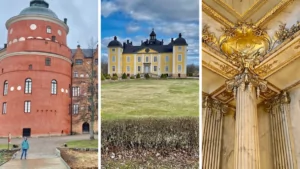
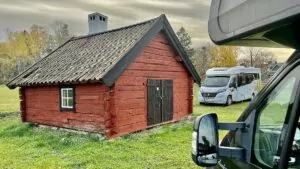
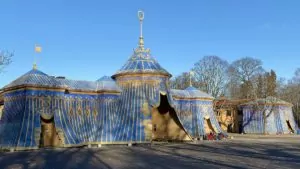

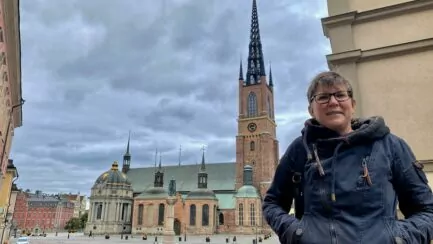
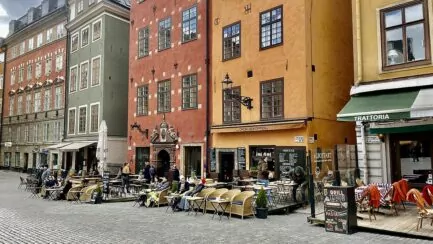
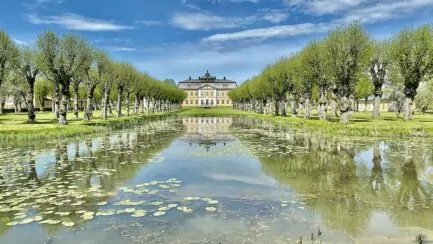
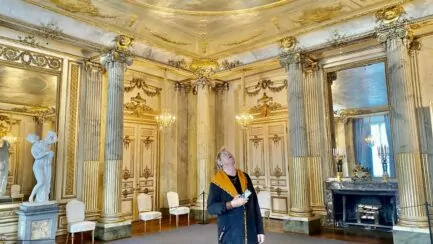
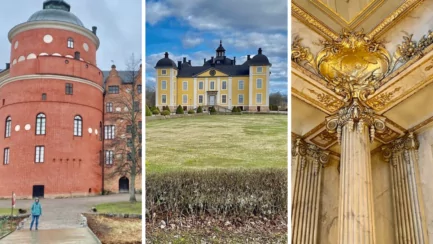



Ditte says:
How nice that you made a visit here. And the knight's house has an exciting history. At the time it was built here, it was a bit of a youth centre. This was the place to meet and be seen.
I visit the Riddarhuset at least once a year with my travel job and we always have a guided tour of 90 minutes, very interesting. We combine this with a tour of Stockholm that I'm responsible for and after lunch we go to the Bonnier family's private villa, Nedre Manilla and get a guided tour of the Bonnier portrait collections. A good mix.
"When it's not pandemic time, I've visited the Royal Palace in connection with parties. There have also been various concerts once a month. Info usually drops into the mailbox about what is going on.
19 September 2021 - 14:08
Helena says:
Nice that you have been here so many times, and on a guided tour it is certainly extra interesting! Nice also with the programme they have, with concerts and other things!
19 September 2021 - 18:27
Ann-Louise Paulsson says:
Riddarhuset is so beautiful, both inside and out. I've been here for a concert a few times and have taken the opportunity to look at all the fine coats of arms, among other things. I have a Trolle among my ancestors, but unfortunately not of the noble family Trolle.
20 September 2021 - 12:34
Monica says:
Riddarhuspalatset is really interesting. Here we have some acquaintances among the "plates", both from my childhood and now other and also dear daughter's friends. In my childhood I thought nothing of the fact that the family that lived next to my aunt was noble and so nice and helpful and probably has one of the most beautiful noble shields. Then a number of people in the medical world belong to the nobility, researchers I worked with but never thought about their origins, no they were very discreet about such things.
Sweden's concert activities started here in 1731; before that, it was a closed circle for the royals and the concerts performed for anyone else took place in churches. But now it was changed when a young man was given the task after many years of studying mudik in London with his friend Handel. Handel's Messiah was later performed here for the first time in the country. Other music also by Telemann for example and we were here and heard dear daughter's music teacher Dan Laurin play Telemann and the daughter has played that music a lot. Twice in a crowded Globen, standing alone on a raised floor that spun slowly around. Absolutely superb. Alice Bah was support to the young people in their dressing rooms. She was great. Her daughter was only 13 years old and Professor Laurin thought she should devote her life entirely to music. But she had to choose for herself and think sensibly. Best to go for a long university education, which she did, and then I will see. Unfortunately, careers and work take up most of her time, so she didn't have much time for music. That in itself is a full-time job in that case. But it was good anyway and we have our memories. This about Riddarhuset, will read more about it and should take a trip there. Nice report you made.
20 September 2021 - 23:49
Lena - good for the soul says:
I have never thought about visiting that place, but now I am attracted by it. How exciting it looks. Always fun to learn about Sweden's history (and to some extent the present).
Hug Lena
16 December 2021 - 6:35